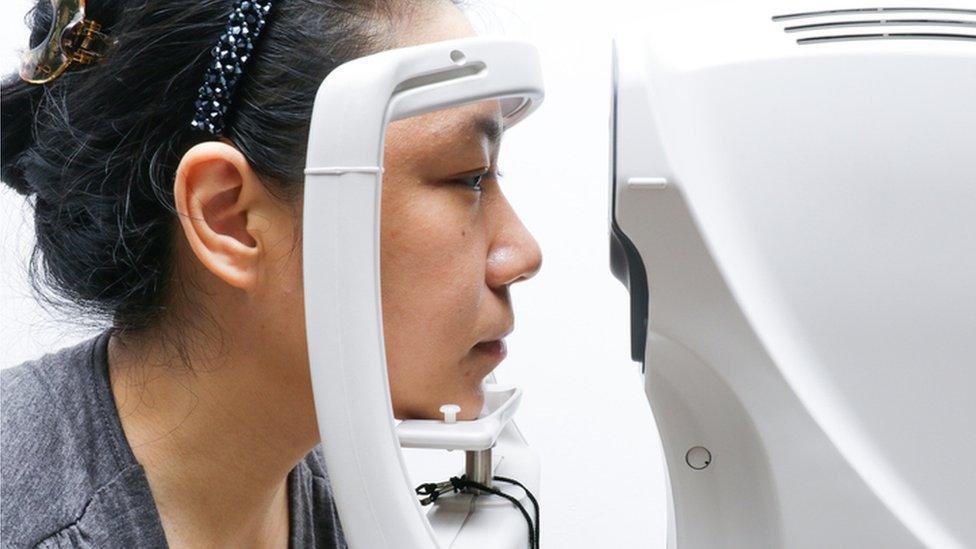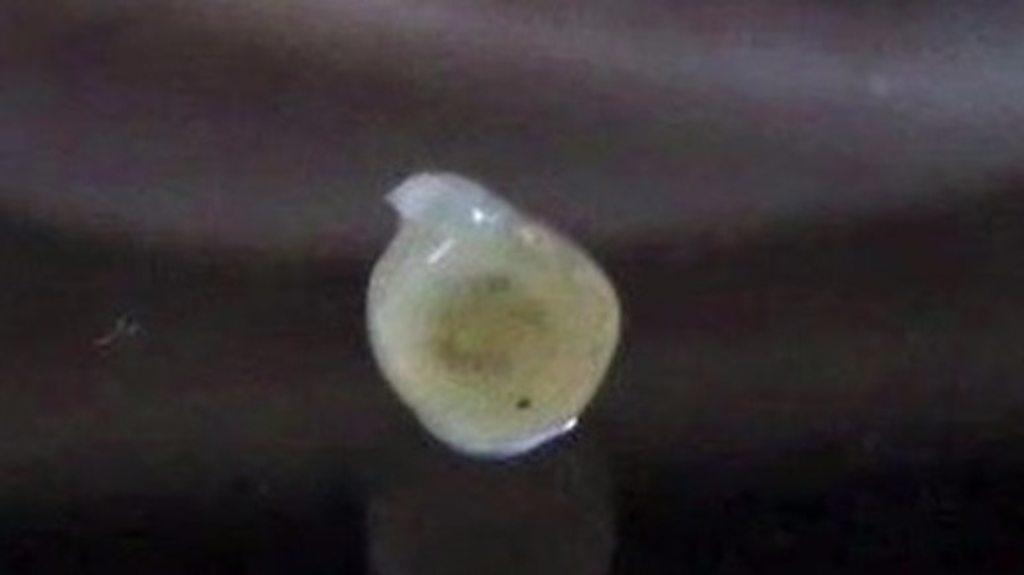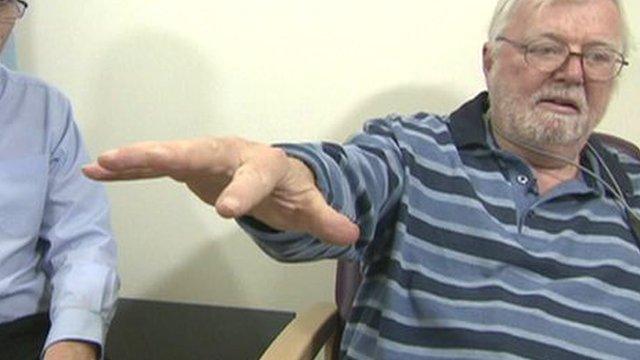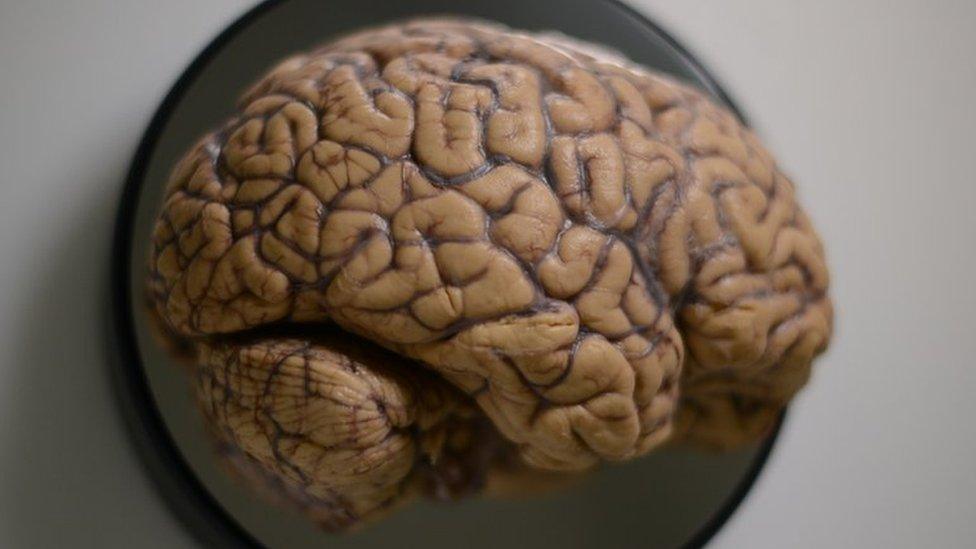Parkinson's could potentially be detected by an eye test
- Published

Researchers may have discovered a method of detecting changes in the eye which could identify Parkinson's disease before its symptoms develop.
Scientists at University College London (UCL) say their early animal tests could lead to a cheap and non-invasive way to spot the disease.
Parkinson's affects 1 in 500 people and is the second most common neurodegenerative disease worldwide.
The charity Parkinson's UK welcomed the research as a "significant step".
The researchers examined rats and found that changes could be seen at the back of their eyes before visible symptoms occurred.
Professor Francesca Cordeiro who led the research said it was a "potentially revolutionary breakthrough in the early diagnosis and treatment of one of the world's most debilitating diseases".
"These tests mean we might be able to intervene much earlier and more effectively treat people with this devastating condition."
Symptoms of Parkinson's include tremors and muscle stiffness, slowness of movement and a reduced quality of life.
These symptoms usually only emerge after brain cells have been damaged.
But there is currently no brain scan, or blood test, that can definitively diagnose Parkinson's disease.
Parkinson's does not directly cause people to die, but symptoms do get worse over time.
Well known sufferers

Legendary boxer Muhammad Ali died at the age of 74, decades after developing the degenerative brain disease Parkinson's. Although his brain disease did not kill him - Ali died following complications linked to a chest infection - it was arguably one of his greatest challenges.
Michael J Fox is another high profile sufferer. He revealed in 1998 that he had been suffering from Parkinson's since 1981. He took a step back from acting to battle the disease.
Billy Connolly revealed in 2013 he had been diagnosed as having the initial symptoms of Parkinson's disease, for which he is receiving the appropriate treatment.
Sir Roger Bannister, the first man to run a mile in less than four minutes, was diagnosed with Parkinson's disease in 2011 when he was 82. A neurologist himself, he said he was having troubles with walking.

'Urgent need'
Dr Arthur Roach, director of research at the charity Parkinson's UK, said there was "an urgent need for a simple and accurate way of detecting the condition, particularly in its early stages".
"Although the research is in its infancy and is yet to be tested on people with Parkinson's, a simple non-invasive test - such as an eye test - could be a significant step forward in the search for treatments that can tackle the underlying causes of the condition rather than masking its symptoms," he added.
Dr Roach pointed out that the charity was funding parallel research which is trying to identify Parkinson's bio-markers, which are measureable changes in people with the condition.
"Having a biomarker for Parkinson's would help diagnose Parkinson's earlier, when people are most likely to benefit from the new treatments aimed at slowing progression," he explained.
The UCL researchers used medical equipment that doctors already use and say the potential new method could also be used to monitor how patients respond to treatment.
The researchers also found that treating their test animals with a newly formulated version of an anti-diabetic drug led to less cell damage.
They said that was another area they would be keen to explore in human trials.
Their research is published in Acta Neuropathologica Communications, external.
- Published29 July 2016

- Published5 June 2016

- Published17 May 2016

- Published18 April 2016

- Published5 March 2016

- Published31 January 2016

- Published7 November 2014

- Published1 August 2016

- Published13 August 2014

- Published16 September 2013

- Published2 May 2014
